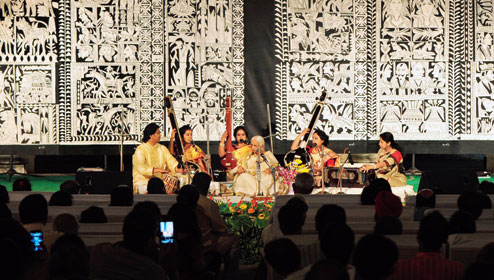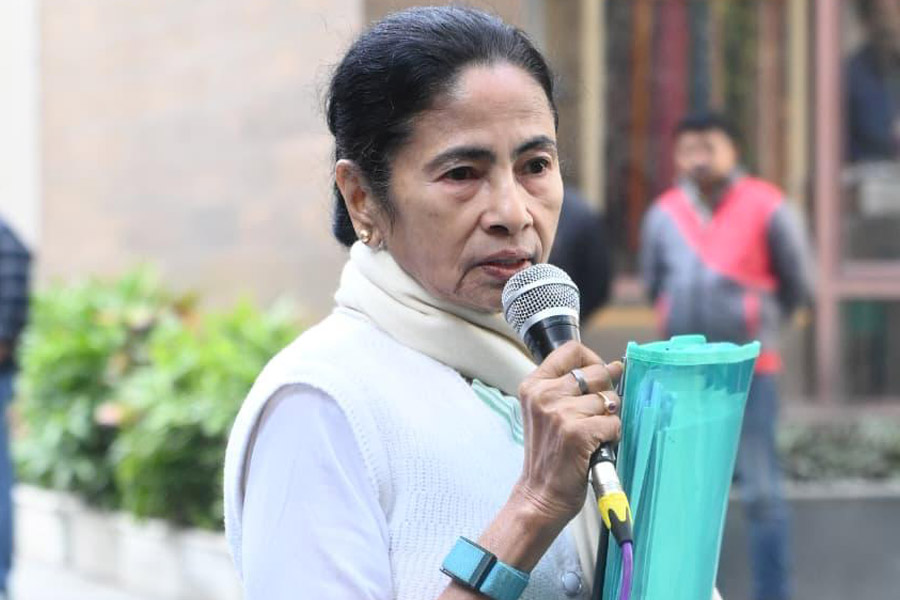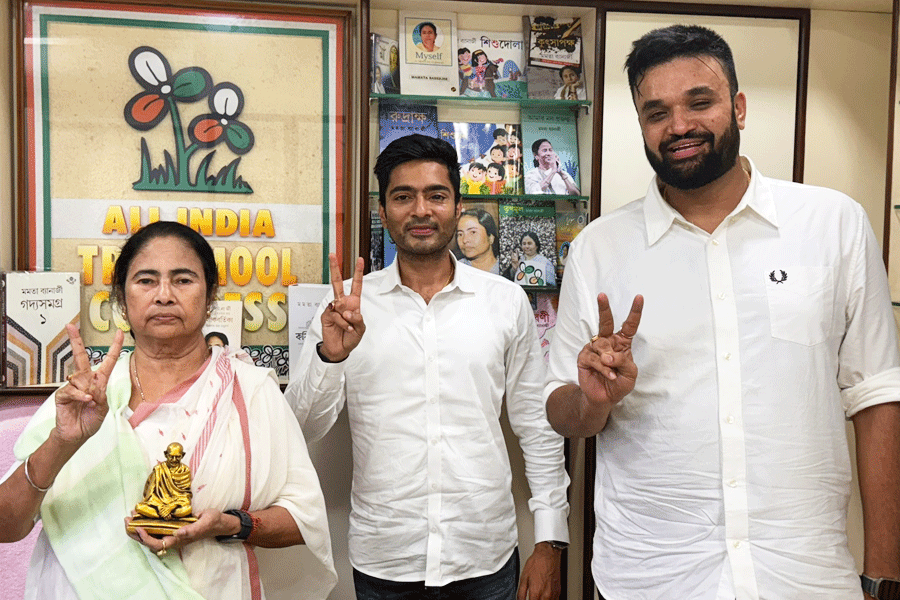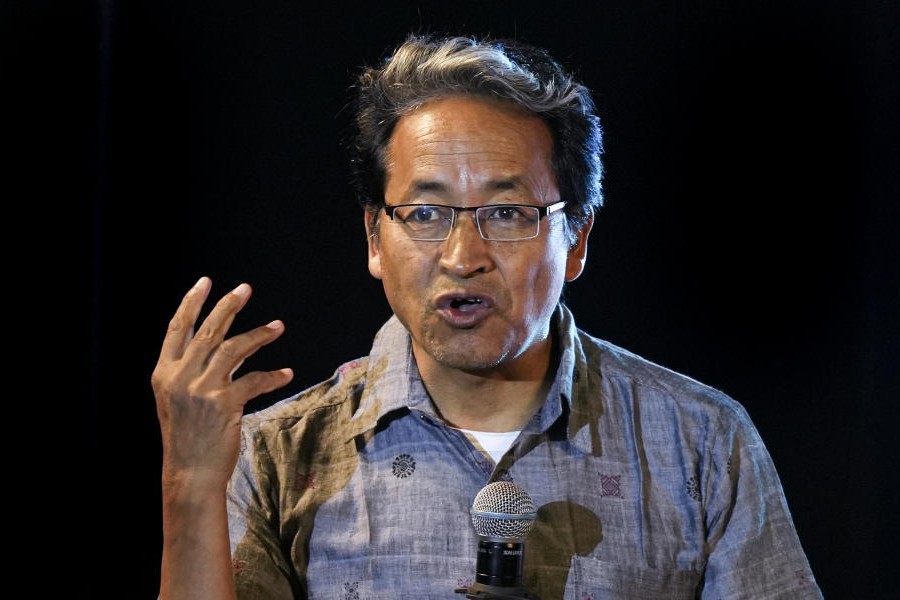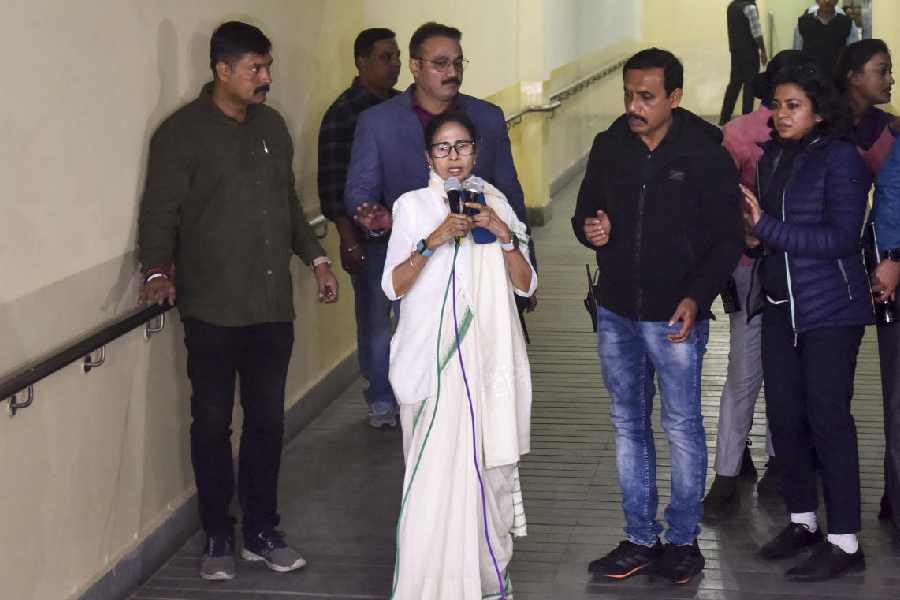 |
Jorasanko Thakurbari on Sunday evening provided the majestic backdrop for the inauguration of a trust to preserve and promote north Calcutta’s diminishing heritage wealth. The Ahiritola-Sutanuti Heritage Trust, set up by a team of Calcuttans devoted to cultural conservation, began its journey by holding the Ahiritola Sutanuti Utsab, in association with
The Telegraph. The audience in the Thakurbari courtyard were treated to a pictorial journey of the city, a musical rendition by Girija Devi and an exhibition of the works of K.G. Subramanyan and other artists. The programme was moderated by Raya Bhattacharya and was attended by US consul-general in Calcutta, Helen LaFave. “North Calcutta is a rich treasure trove of historic wealth waiting to be explored. How many of us know that a portion of the Thakurbari first floor was converted into an full-fledged operation theatre to treat Tagore’s prostrate carcinoma?” asked Amit Ghose, a senior urologist and the convener of the trust. The art exhibition, curated by Ina Puri, was mounted in a gallery by the courtyard. Artwork by Subramanyan (including the mural in the backdrop, above), Somnath Hore, Paritosh Sen, Ganesh Haloi and Chitrovanu Mazumdar, courtesy Akar Prakar, The Seagull Foundation for the Arts and Sakshi Gallery, were on display
 |
JAWHAR SIRCAR
The dominant historical narrative of Calcutta is one that had been documented and disseminated by the British. Jawhar Sircar, CEO, Prasar Bharati, who delivered the keynote address, said: “The story of north Calcutta is a story of counter-narrative of the people of the area, one that needs to be brought out in the open and retold.” Aided by a collection of rare paintings dating back to early 18th century, Sircar chronologically detailed the evolution of Dalhousie, then known as “Saheb Para” or the White Town and the rest of north Calcutta, including Sutanuti, Jorabagan, Jorasanko, Kumartuli, Burtolla and Hathkhola, which were collectively referred to as the “black town”. Sircar is seen here by a Subramanyan painting
 |
GIRIJA DEVI
A packed courtyard, with many sitting on the steps and even leaning from balconies, listened in rapt attention as Girija Devi sang for over 40 minutes. “It is a privilege and an honour to be at Rabindranath Tagore’s home today and being able to perform here. This is the first time I am singing here,” said the 84-year-old Hindustani classical singer who was greeted with a standing ovation as she took the stage, accompanied by four pupils
 |  |
It is heartening to see such a spirited and earnest initiative to preserve the heritage of north Calcutta. I believe it is very important to remember and respect the city’s rich cultural history. I myself grew up in Wellington Square (now Subodh Mullick Square) in the north and was very happy to be involved in this effort of creating a sacred and hallowed space for its preservation Ina Puri | I am impressed and happy about the fact that an effort is being put towards this cause. My family is from Thanthania in the north and it does hurt to see the diminishing glory of north Calcutta. There has been unimaginable cultural loss because of neglect but the fact that awareness is being created now is a good sign Nabaneeta Dev Sen |
 |  |
Just being at this venue makes one feel like one is a part of history. The evening provided a perfect jugalbandi of art and music and the initiative is one, which deserves kudos. I have spent my childhood growing up in Baranagar and consider myself a north Calcutta lad Aniruddha Roy Chowdhury | What a fantastic setting for such a worthwhile endeavour. All the three aspects — art, music and culture — for which Jorasanko Thakurbari stands were represented in today’s programme. I was born in a house in Shyambazar and am very close to north Calcutta. Recent trends do indicate that Calcuttans are waking up to heritage conservation Kunal Basu |

